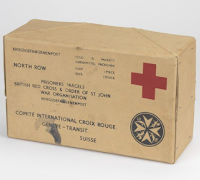Funerals. Page 30

Prisoners who died in the camps were almost exclusively honoured with a military funeral where possible. Prisoners died naturally when nature took it's course, some men died during allied air raids and some men died of bayonet or gunshot wounds. In particular, one man who refused to scale icy steelwork at the refinery during wintry conditions complained he was not suitably attired to carry out the work was immediately shot. The prisoners mourners were allowed out of camp to attend the service of internment, one of the larger sites at Blechhammer was the graveyard at Ehrenforst. The mass burial for the men who died during the bombing of the camp on Saturday 2nd December 1944 were buried there. Photos courtesy D Hobbs.






